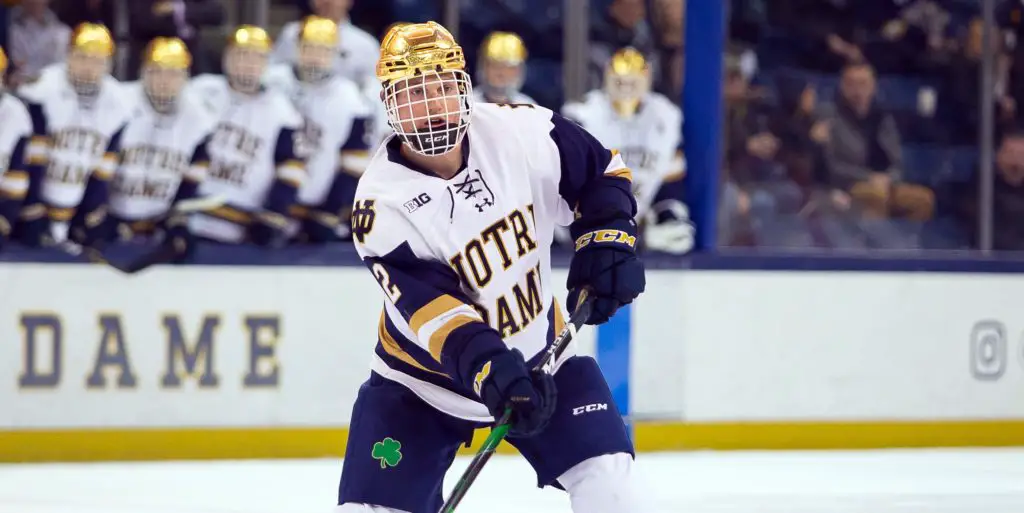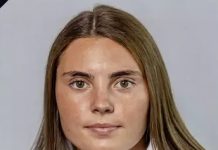
With Selection Sunday now in the rear-view mirror and the tourney a few days away from beginning, Jayson Moy and Jim Connelly analyze the bracket.
Jayson: Let’s start off and say that even without the PairWise this year, I still managed to correctly pick all 16 teams in the tournament with one caveat – that Notre Dame took the last spot instead of St. Lawrence, who unfortunately had to withdraw.
But, if you look at my bubble analysis, Notre Dame was the last team out when I set the bracket. Therefore, I will pat myself on the back and take the win.
Let’s look a little at some of the differences. They mainly occurred in the seeding.
Massachusetts and Michigan were given No. 2 seeds and Minnesota Duluth and Quinnipiac were given No. 3 seeds.
I should have seen the Massachusetts seeding coming with its win of the Hockey East title and Quinnipiac not winning the ECAC title. It seems that Massachusetts was given the overall fifth seed, higher than I thought. Quinnipiac was not as high as I had thought they would be, as others have pointed out.
For Michigan, I was a little surprised about how it was given a two seed over Minnesota Duluth, but in the end it doesn’t matter as they are playing each other in Fargo, meaning that they were the 8 and 9 seed overall.
The other change in seeding was Lake Superior moving to the third band – again, I underestimated winning the WCHA title with it, and Omaha placed in the fourth band – which I should have seen coming.
For the bracket itself, while the protection of the number seed is always a priority, I did not think it would be so much the case in this strange year. But, I was proven wrong and AIC was sent to Fargo to play North Dakota. I did think it would be the other way around with Notre Dame possibly going to play in Fargo and AIC facing Boston College, but it was not the case.
As for the other thing, I think there could have been some more movement to keep teams closer. For example, Quinnipiac could have been in Bridgeport playing Massachusetts, if St Cloud moved to Loveland and Lake Superior to Albany (which would have been interesting, as it is 3-1 in that building including the 1992 National Championship).
Otherwise, you can’t really complain about the field this year.
JOIN THE 2021 USCHO NCAA COLLEGE HOCKEY BRACKET CHALLENGE
Jim: Maybe you can’t complain, but people will and are.
First, I’ll look at my bracket and point out my one major error: trusting that the committee would consider teams that were under .500 in winning percentage. It’s pretty obvious that they didn’t do that and it was confirmed to me last night.
Thus, me having Connecticut taking the final seed not only was incorrect, it never was a consideration. And Denver fans can also rest easy as they weren’t considered.
But once you got to that point, the approach we were taking was correct (and why your 16-team field was spot on). Committee chair Mike Kemp confirmed on the special live edition of the USCHO Weekend Review podcast, that bubble teams were compared to one another by looking at each team’s record against the other teams from their conference that were already in the tournament field.
Let’s look at that breakdown when looking at each conference’s bubble team:
Bemidji State: 4-5-2 (.455) vs. Minnesota State and Lake Superior
Omaha: 3-6-1 (.350) vs. North Dakota, Minnesota Duluth and St. Cloud
Notre Dame: 4-7-1 (.375) vs. Minnesota, Wisconsin and Michigan
Providence: 1-5-2 (.250) vs. Boston College, UMass and Boston University
Bowling Green 0-4-0 (.000) vs. Minnesota State and Lake Superior (also 2-0-0 vs. Quinnipiac, a team that is in the field from ECAC)
Originally, the committee was trying to fill two spots and took Bemidji State and Omaha. When St. Lawrence dropped out, Notre Dame was next in line (though you could question why Notre Dame wasn’t originally the 16th team instead of Omaha).
Mike Kemp did confirm that should any further team have to withdraw due to COVID protocols prior to 7 p.m. tonight (Monday), the replacement team will be Providence. After 7p.m. on Monday the field is set and further withdrawals would result in games being declared “no contest” and the remaining team advancing.
The other component, once the field was selected, was maintaining bracket integrity rather than attempting to limit travel due to COVID. The split was even greater between east and west (five eastern teams, 11 west), so the NCAA was already placing a few teams on airplanes.
With that in mind, the priority became setting up the tournament to maintain the 1 vs. 16, 2 vs. 15, 3 vs. 14, etc. in the first round. Though only the first four seeds are actually defined, you can make sense of some of the others and see that this looks like near perfection in maintaining the integrity of the bracket.
Let’s take the Bridgeport Region. Wisconsin is the top seed, fourth overall. It’s pretty obvious that the committee had Wisconsin just ahead of Massachusetts, or the fifth seed. UMass is the number two seed in Bridgeport.
You would then want the 12th and 13th seeds. Lake Superior is the three seed and probably the weakest of the four teams in that band (Michigan, Boston University and Quinnipiac) and, as we outlined above, Bemidji State is the highest of the four seeds once you place the Atlantic Hockey champion AIC at 16 (something that historically has occurred – AIC is also playing the number one overall seed).
So to me, it is obvious that the NCAA was fine flying teams wherever they had to in order to make the bracket as close to perfect as possible.
Of note, one thing we would talk about in a typical year is protecting the gate. Only two of the four regionals will have fans – Fargo and Albany. Fargo, well with North Dakota and only 1,500 available tickets (25% capacity), sold out a while ago. Albany, a larger arena with a 15% capacity, allows for 2,135, still got some protection with Boston College and Boston University a three-hour drive away and Notre Dame, a school with plenty of national alumni.
In the end, I will tip my cap to you, Jayson. Though you began bracketology this year with some crazy theories, in the end you got it right.
And now that we’ve broken down the numbers and the process, it seems the NCAA committee did as well.


